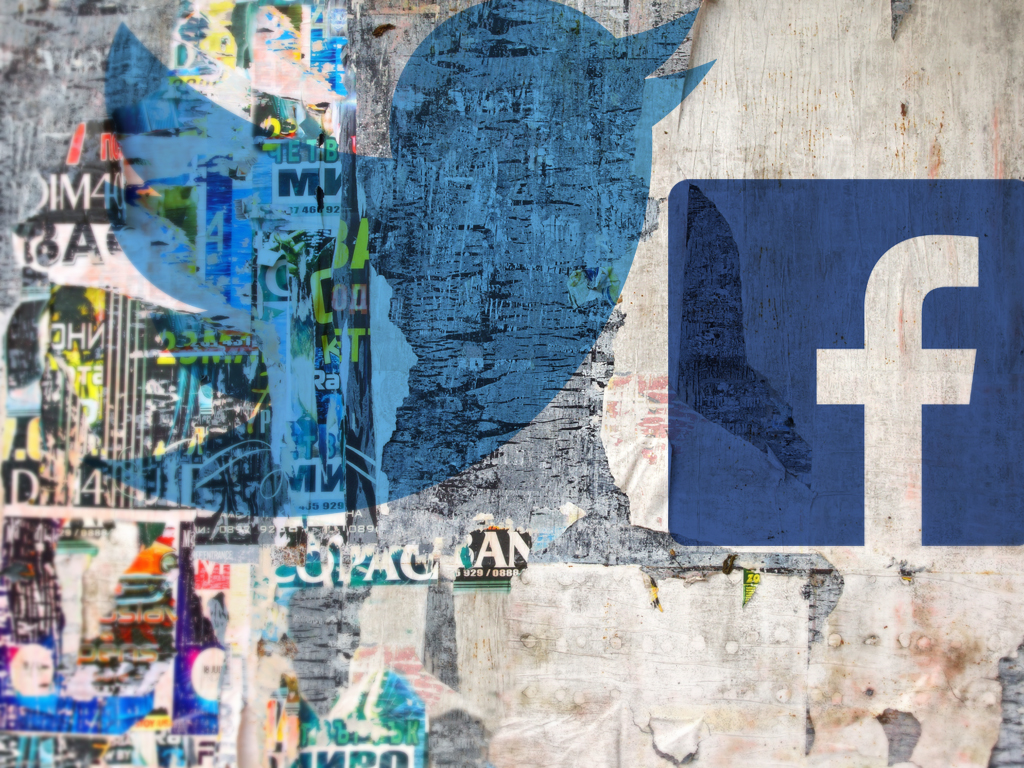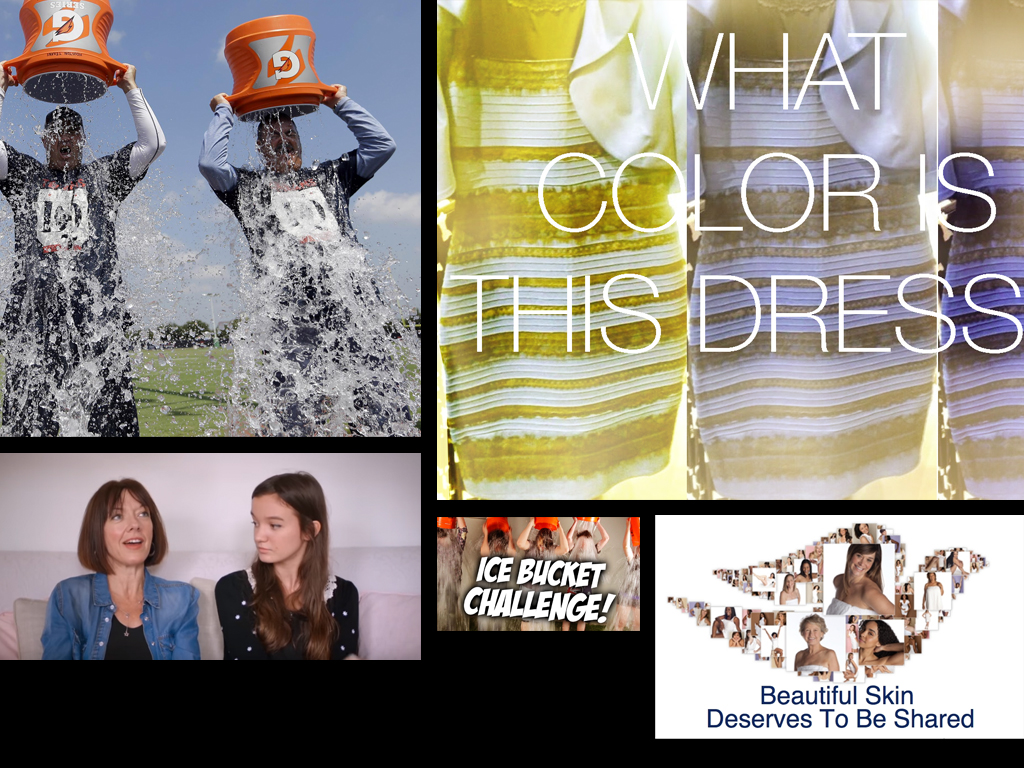Last year we published a blog post about The Psychology of Online Sharing where we looked into the popularity and growth of social media networks analysing the psychological triggers that motivate us humans to share content online and further what content is most likely to be passed on between peer groups.
This time around we are looking at individual decision making and the role social dynamics play between people generating collective outcomes such as social contagion and trends.
So what really makes products and services go viral and spread contagiously? How can digital marketers make their offers catch on and become popular amongst their audiences?
Let’s set the scene first: according to Technorati Media’s 2013 Digital Influence Report the digital landscape has slightly changed compared to last year. The survey’s interviewees consisted of 6000 influencers, 1200 consumers and 150 top brands – a pretty comprehensive sample.
60% of top brands suggest a 40% increase in social spend for the year 2013. Currently the majority of brands’ digital spend goes directly to search, display advertisement and video. Whilst only 10% of the total digital spend are devoted to social media and influencer marketing. To further break these 10% down – Facebook takes the biggest slice of the cake currently accounting for 57% of social spend closely followed by YouTube and Twitter each accounting for 13%. The graph below gives a clear outline of the top brands social spending fragmentation.

Influencers & Blogs have greater impact than social media
You probably think so far so good, but there’s been a pretty steep shift in consumer trust, popularity and influence meaning that even though influencers and blogs are only allocated the minimum digital spend they now have a greater impact on consumer decision making than social media!
Regarding the consumer’s purchase decision making process, blogs now trail closely behind brand and retail sites and also belong to the top 5 most trusted online sources. According to consumers blogs have a greater impact on forming opinions than Twitter. This means the landscape has changed and that blogs have a higher impact than social media on your consumers’ purchasing decisions.

The harsh reality is that brands’ spending is not fully aligned with where and how consumers are seeing value and are being influenced. Meaning digital marketers are currently missing out on a big piece of the cake.
I believe that this is interlinked with the potential hurdle faced by numerous content creators who lack the right metrics to see where and how their consumers are actually being persuaded.
Why most digital marketers are currently missing out
From this it becomes apparent that the art and science of picking and choosing influencers has become key. However, in the survey, the brands used different metrics for selecting influencers such as comScore/Nielsen, followed by the number of Twitter followers, Facebook likes and the influencer’s likelihood to draw likes. But it’s important to note that niche-sized influencers are not well presented within comScore/Nielsen.
This reasserts the importance of selecting the right metrics to find market/niche influencers as they greatly influence your consumer’s purchase decision making.
So what are the right metrics?
You may know who’s a sector influencer, possibly even how to reach them, but do you know their network and how influential they are? Bloggers don’t just exist on their blogs but also on their social media outlets where they’ll share their passion and promote their posts. What digital marketers therefore need is a way to identify which bloggers are influential within a vertical and who is interacting a lot with the industry.
Linkdex has therefore been working hard analysing conversations and relationships on Twitter, for every vertical in the world. Each of these verticals contain networks of influencers and social sharers. If you look at your own industry you will have closer relationships with some and more distant relationships with others. Meaning there will be large groups of people where you don’t have any traction or influence — yet.
Introducing Linkdex Networks
Our latest innovation Linkdex Networks enables you to visualise and analyse these groups of relevant influencers. The objective is to enable digital marketers to gradually identify the right personalities and build relationships with them, spreading along those networks for maximum exposure.
If someone within your network has lots of relationships pointing to them you know that they are perceived as trustworthy sources. The aim is to find influencers who are passionate on a niche topic, have strong relationships with the group and are receptive to new ideas with plenty of reach.

When most people look for influencers they actually find the noise makers and the most recognisable faces. What these diagrams allow you to do is identify the real actionable opportunities available to you. So you might stop spamming poor old @randfish with messages and start talking to the small niche influencers who are closest to you and more likely to be receptive and helpful.
Truly understanding how people relate to each other in a network diagram is a powerful way of pinpointing the people you need to talk to. With Linkdex networks you can also see:
- your contacts
- your own brand
- your friends
- your contact’s friends
- as well as the influencers inside that network
And you can see all this in the same network visualisation. The profiles also include the domains they write for, their social profiles and contact details, allowing you to spend more time making your ideas and products contagious.
What is influence — and how to choose influencers
Influence at its really high level is the ability to change someone’s thought or action — therefore influencers have to provide relevant and trusted content to their communities to create some kind of contagious effect. Below are 8 factors to consider when choosing your influencers
- Credibility: they have to be trustworthy, active and telling their world their opinion on an on-going basis.
- Bandwidth: the influencer has to have a high bandwidth — what’s their expertise? How many times do they tweet each day? How often do they publish posts? What’s their reach?
- Domain Credibility: there is no such thing as an universal influencer. People are usually influential within certain domains or specific social networks.
- Relevance: Determine how passionate they are about the topic – individuals often become influential firstly because of their passion and expertise on a topic.

- Trust: Regardless of the other factors, if the target audience doesn’t trust the influencer your brand’s message won’t be amplified.
- Channel Alignment: the alignment of where the target and the influencer is, obviously they have to be in the same place.
- Blog Reach: Most influencers blog and are usually perceived as being genuine since they are sincere in their product/service reviews therefore they become a trusted source of information. As a result trust drives action, and thus consumers look to bloggers to gain product insights.
- Big vs Small Communities: Communities are a great place to share information and discuss ideas with others. Look for influencers who have earned the trust of smaller or niche communities and provide them with value and start building a relationship with them.
We are moving from Domains To People
The digital marketer’s focus has been re-shaped with emphasis on people and their networks rather than domains. At one of our highly anticipated Linkdex Think Tanks late last year I had the chance to talk with Kelvin Newman from Sitevisibility and he said something worth remembering:
Too long we have kind of concentrated on websites and web pages rather than the people who are behind that. I think that what digital marketers want to do is as individuals to connect to other individuals. The ability to track those people down in a scalable and efficient way is really quite interesting. That means if you know those people and you know what kind of content they have shared previously, what kind of content they like, and what they are interested in. If you can understand that about a group of individuals beforehand, then when you are putting content together you can think about that in that process. So if you understand what they have liked and what they as a group have liked previously you can increase the likelihood of producing something successful.
Once you understand where online communities are, why they are there, what makes them tick, how they are connected with others and who they are connected with — I think you won’t argue with me if I say only then are you in a seriously powerful position to target them accordingly.
The next step we ought to take now is to get an understanding of social dynamics of groups whose interactions with each other generate collective outcomes such as social contagion and trends — after all that’s what we want to achieve, right?
Behavioural & Emotional Contagion
Gustave Le Bon first used the term in 1895 to explain aspects of people’s behaviour in crowds. Humans usually act very much alike when they are in crowds (e.g online communities) – imitating another’s behaviour. To achieve behavioural contagion within online communities the following variables have to be met
- The information seeker and the influencer have to share a similar mood or situation
- The influencer’s behaviour encourages the seeker to review his/her condition and to change it
- The influencer’s behaviour would assist the seeker to resolve a conflict by reducing restraints if copied – that’s the foundation of contagious diffusiveness
Another aspect to further influence contagion is the level to which the seeker identifies himself/herself with the others of the group — if identification is strong the behaviours of the others will have a greater impact.
Emotional contagion on the other hand is the inclination to think or do things in a certain way associated with others. Emotional contagion is widely spread via social networking sites and blogs – in the form of persuasion contexts. The ability to transfer moods appears to be innate in humans. According to Hatfield this takes place through the following steps
- When the seeker is interacting with the influencer, he perceives the emotional expression of the influencer
- The seeker then automatically mimics those emotional expressions
Through the process of “afferent feedback” these new expressions are translated into feeling the emotions the influencer feels, thus leading to emotional convergence. The higher the influencer’s energy level the higher the contagious effect.
Factors that influence group contagion
So far we have briefly discussed the psychological aspects of behavioural and emotional contagion. The extent and rate of emotional convergence within online communities is determined by its:
- membership stability
- task interdependence
- social interdependence
As well as the group’s personal properties such as
- openness to receive
- transmit feelings
- demographical characteristics
Harry Potter World Global Campaign Launch
For the launch of the its much anticipated Harry Potter World resort the top 10 community influencers were identified to precedent over traditional media. They were invited to an exclusive webcast where the launch was first announced and equipped with exclusive artwork followed by a Q&A. The icing of the cake though was the invite to the actual film location – a guarantee for their audiences to engage with them.

The result?
- 1,000 pieces of content within 24 hours
- Generating 6.5 million searches on Google and Yahoo
- 18,000 positive posts within social media networks – accounting for 0.3% of the total posts that day
- One week after the campaign launch a mere 175 million people were talking about it
Now that’s what I call a truly contagious effect!
Conclusion
Influencers are usually passionate thought leaders as well as consumers. Their voice is valued by their followers and their passion and authenticity are key to their online reach. Every brand has or could have influencers — the challenge until now was how to truly identify them but Linkdex Networks puts you in a powerful position to get in touch with those you really want to speak to! To create a genuinely contagious effect within your target audience the only challenge you face now is to fit your chosen influencers with your brand’s goodwill and core ethos empowering them to engage others passionately, credibly and authentically.



